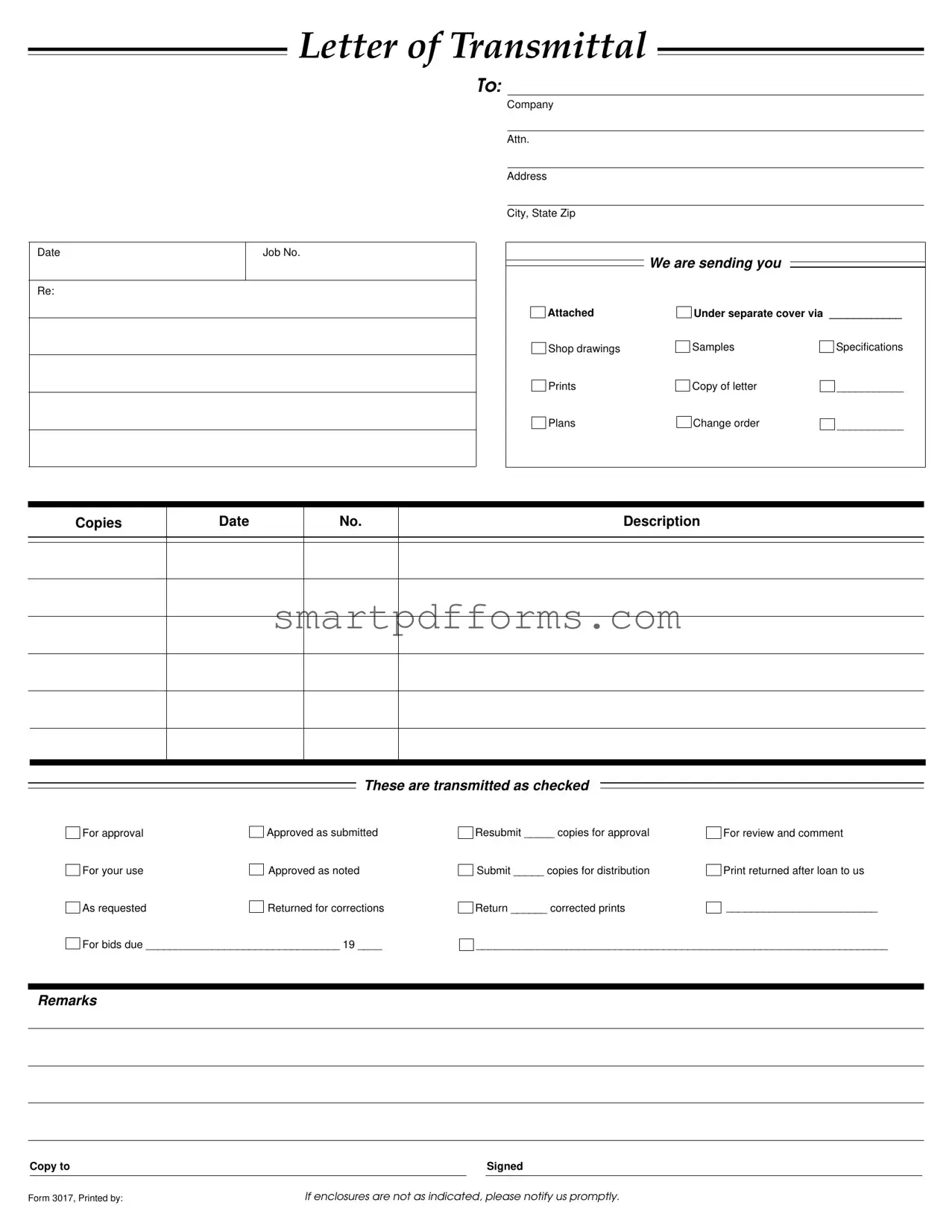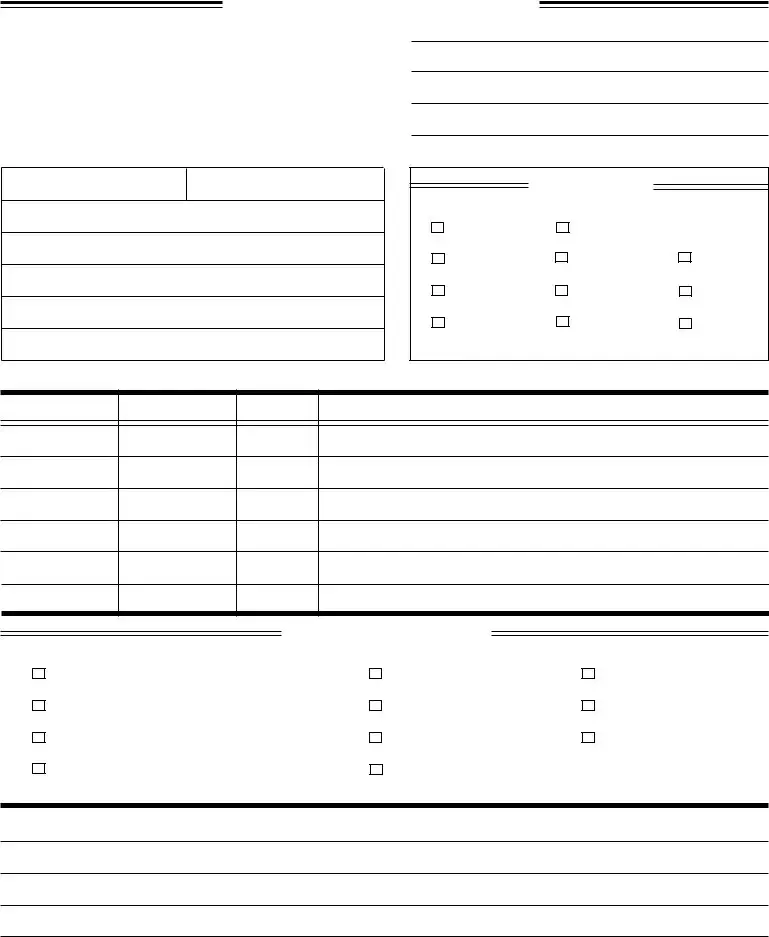Blank Transmittal PDF Template
A Transmittal Form is essentially a document used to officially send or transfer information, documents, or items from one party to another, documenting what is being sent, the reason for sending, and the mode of transport. It acts as a detailed receipt that both parties can refer to, ensuring that the items sent are received and recorded correctly. For anyone needing to manage or document the sending of materials, documents, or information efficiently, filling out a transmittal form is a critical step.
Ready to ensure your documents are correctly acknowledged and recorded? Click the button below to fill out your transmittal form with ease.
Make This Document Now

